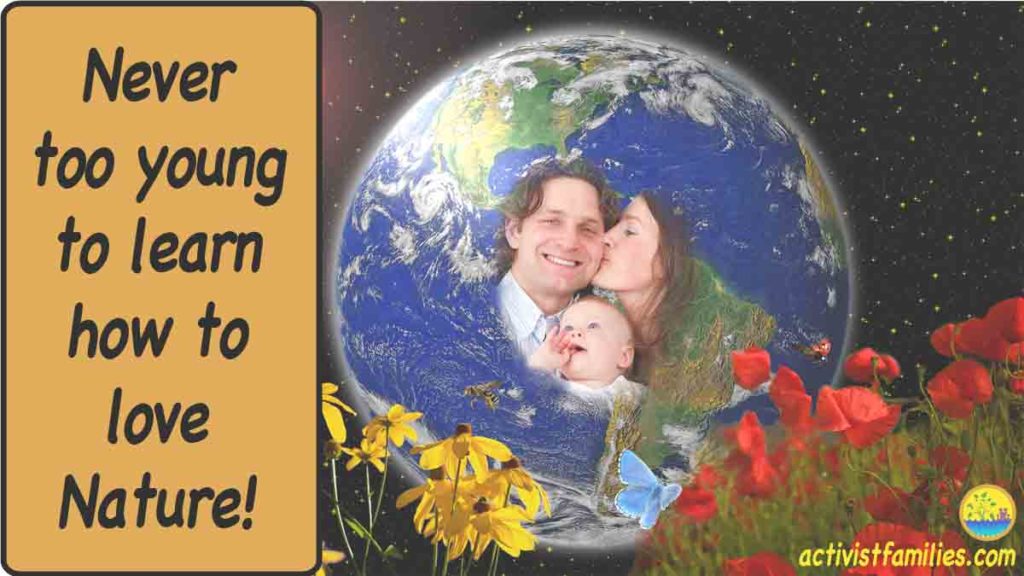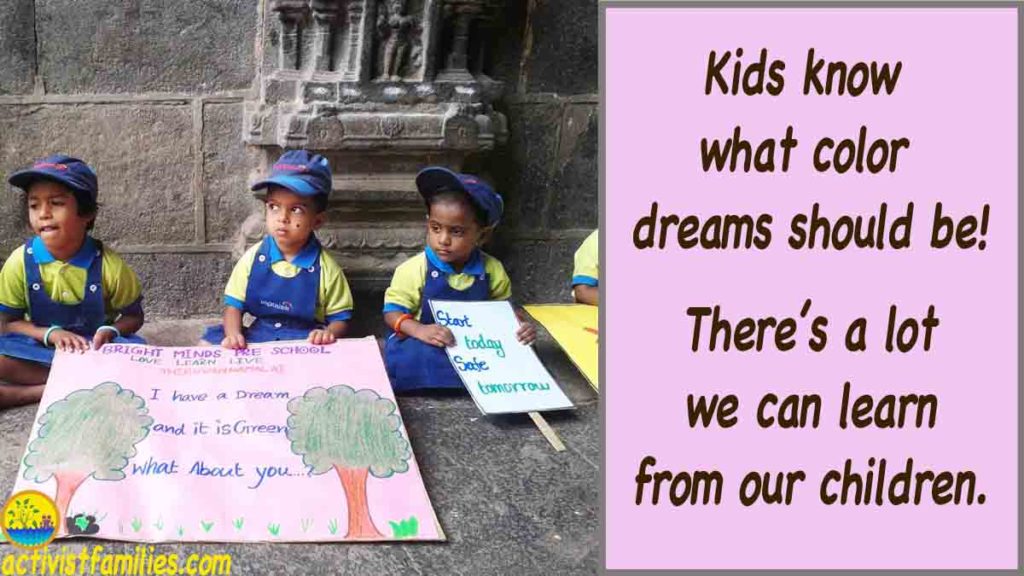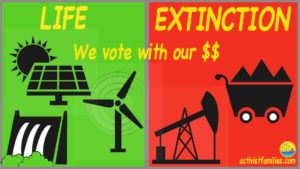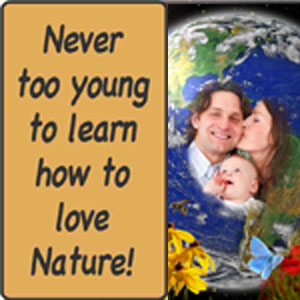Disclosure: Some of the links below may be affiliate links, meaning, at no additional cost to you, I may earn a commission if you click through and make a purchase.
Can You Teach Young Children Eco-Friendly Living
Without Bringing Up Global Warming?
Shouldn’t a child learn how to live in tune with nature from birth? Why wouldn’t you take your babies outdoors often, lie together on the grass, take them to visit gardens, the ocean or a river or lake, lie out with them on summer evenings looking up at the stars? Start them out with the positive before bringing up global warming.
Babies can feel nature’s loving vibrations, and exposing them to her wonders sets an eco friendly tone for their lives.

As your children grow, there are so many ways you can help them fall in love with nature and learn to take care of the life around us.
Of course, you can only teach them the things you know, and you want to be prepared for their questions to avoid giving out misinformation. In what follows, I am including numerous links to reader-friendly information on topics related to global warming that you can access to prepare you for a variety of different eco conversations with your children.
Introducing Toddlers to Nature
Have you ever watched a toddler at a petting zoo? You have to supervise them closely, but oh, what a joy to watch them in their precious first experiences with goats and sheep!
If you have a pet at home, your wee ones can begin to take part in feeding and learn about the importance of keeping water available.

As Your Children Grow
As your children grow, it’s important to spend time with them out of doors. As opportunities arise, you might begin to explain how nature works, one thing feeding another; for example, what is carbon dioxide? And the carbon-dioxide-oxygen cycle.
Start by making them aware of their own breathing; this gives them a reference point for talking about how plants and animals absorb different invisible elements from the air, how the plants absorb carbon dioxide and give off oxygen through their leaves, and how animals, including we humans, breathe in the oxygen made by the plants and breathe out carbon dioxide, in a continual dance of give and take with the plant kingdom.
Children’s books about nature are a wonderful way to create intent to care for the environment. Check out Green Song Press for a good selection of kids’ eco books that get the idea across without ever having to mention global warming!
A birdhouse or bird feeder is a wonderful generator of heartfelt connection with other species. You might buy one and put it up in your backyard, or if you and your kids are up to it, you could Google “how to build a birdhouse,” get birdhouse plans and build one together. In some areas, a squirrel proof bird feeder would be appropriate. Getting a bird feeder or a birdhouse is a great opportunity to discuss what kinds of food birds should eat. Emphasize the importance of feeding seeds, not bread, to keep the birds healthy.

As time passes and different birds pass through and visit your feeder, talk to your youngsters about bird species and why they migrate.
Point out the different birds, and engage your kids in looking for new species to arrive. You might plan with them ways to make your backyard more bird friendly, to attract more lovely songsters.
Together you can set up a garden design project, giving each child small tasks they can perform to help move the process along.
Another approach involves taking your children to the beach or to a nearby river, stream or lake and look for water life together. Point out different species as you spot them, and sit together and watch them as they go about their daily activities. You might gently brush on the topic of the most endangered species, but instead of dwelling on the negative (so painful for young children), turn the conversation to something positive, such as the importance of keeping the waterways clear of toxic dog poop and how we can help rid the ocean of toxic plastics.
Young children can enjoy taking part in casual and organized waterside cleanups with their family. These are natural lead-ins to the subject of recycling.
Let your kids help set up your home recycling center, or Google “recycling center near me” and take them with you. Talk to them about eco friendly cleaning products and replacing plastics with plant-based alternatives that don’t contribute to global warming.

Young children may ask about global warming or climate change, now that the topic has assumed its rightful place in the news and adult conversation. Go easy here; tell the truth, but find a way to turn the conversation to ways they can help. Share some global warming facts, talk a little about what causes global warming and suggest simple actions they can take, such as:
- Reuse and recycle bottles, cans, paper products.
- Turn off the lights when no one is in a room.
- Turn off the water while brushing their teeth.
- Take shorter showers.
- Unplug electrical appliances when not in use (if old enough to do so safely).
- Clean up natural waterways (as a family activity).
- Plant trees or care for a vegetable or flower garden (as a family activity).
- Pick out eco-friendly products when shopping with adults.
- Ask for eco-friendly toys instead of plastic toys.
- Make signs and take part in marches with family.
This is not a complete list of great family actions; there are lots more.
Your children will need to know just how each action helps the climate change situation, so it’s best to be ready to explain or go online with them to find the answers.
Talking to Teens About Global Warming
By the time they’re teenagers, most kids are somewhat informed about global warming. They may even know about the 21 Oregon youth activists who sued the US government in 2015 for undertaking policies that contribute to climate change and deny young people the Constitutional right to a safe climate, a public resource.
If your kids haven’t heard about Juliana v. United States, you can tell them about it and have them check it out online. (The links in these two paragraphs lead to various websites reporting on the case.)
As one of the 21 participating in the suit (Nathan, from Alaska, now an adult) put it, “If climate change wipes us all out tomorrow, how do we want to be remembered? As the generation that did nothing in the face of adversity and chose profits over people? Or as the generation that despite all odds came together to give this problem our best shot?” (https://www.oprahmag.com/life/a26632833/what-is-climate-change-save-the-planet/)
Organize Your Family as an Eco Action Team
If your teens consider actions on global warming that these young people are taking to be pretty cool, ask them if they’ve given any thought to actions THEY might take on climate change.
If they look at you with wide eyes, amazed that you would raise such a question, tell them you’ve been thinking about it and about things you might do together as a family. Ask them what particular issues related to global warming interest them most, and take notes.
That’s a start. The next step might be for each of you to commit to researching what causes global warming and what we can do about it. Set a date by which you’ll do that, and schedule a meeting to share and discuss your research.
Don’t let your meetings drag on, especially if they include younger children. As soon as you sense their energy beginning to fade, wind it up and schedule the next meeting. Once a week is probably good. The main goal here is to support them in deciding where they want to put their energy, what issue they want to work on and what activities that might entail.
Kids’ books on eco topics are a great way to introduce your kids or grandkids to the need to respond to global warming bu caring for our Earth. Kids and families learning together, planning together and taking action together can have a huge impact. Check out Green Song Press for some great books to set you and your kids on the way to Eco Superstardom.

Let’s March Against Global Warming!
For kids of all ages, protest marches are perfect. Find one in your area, and help your kids make signs to carry. Ask them what’s most important to them and help them make a sign about it. Then take him to the march with your own signs of course and participate. You can find the great example of this on the Internet.
You may find that your kids know a lot more about hot items of climate change/global warming news than you do. That could mean you need to do some fact-finding, or it could mean it’s time to listen to your kids. Let them be the teachers. They’ll love that. Help them learn more, and let them help you learn more. Become an informed family group. And then talk to other families, other parents and kids, and encourage them to do the same

Green Investments Fight Global Warming
If you own stocks or a retirement account, it’s likely that publicly traded fossil fuel companies figure into your portfolio. You would help the environment by withdrawing your funds and investing it into green energy funds like the Fidelity Select Environment and Alternative Energy Portfolio (FSLEX) and New Alternatives Fund (NALFX). Why not ask your kids to help you find green investments online?
Empower Your Kids By Leading Them Into Right Action
Let your kids inspire you and keep you going as you guide them by becoming their role model for eco action. Kids who grow up in eco-activist families can be powerful agents of change.
That’s what we’re about. Empowering kids and their families to take powerful action on global warming at home, in the community, and at state and national levels.
To your eco-active empowerment,
Chiwah
Eco Activist 🙂 Kids’ Book Author 💡 Editor 😯 Book Formatter 😎 Cover Designer 😀 Publisher
AWriteToKnow.com, PetWrites.com
Email: Info@EcoActive101.com

